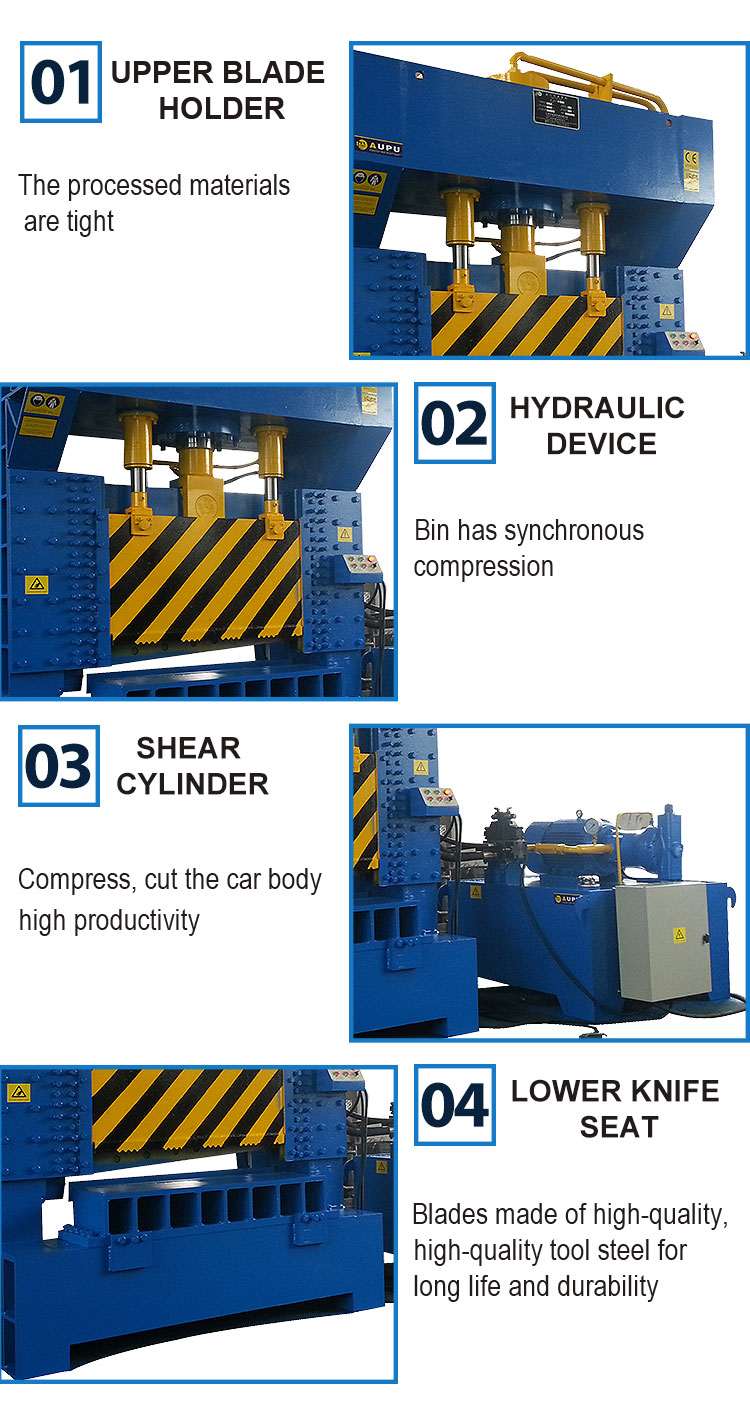Identifying whether a metal shear is operating under overload is critical to preventing equipment damage, ensuring safety, and maintaining cutting accuracy. Here are key methods to assess overload:
1. Monitor Operational Sounds and Vibrations
Unusual noises or excessive vibrations often signal overload. A healthy shear operates with smooth, consistent mechanical sounds. If you hear grinding, rattling, or strained motor noises, or notice violent shaking, the machine may be struggling to cut through thick or hard materials beyond its capacity. For example, a hydraulic shear under overload might emit a "whining" sound from the pump due to excessive pressure.
2. Check Motor and Component Temperature
Overheating is a direct indicator of overload. Touch the motor, gearbox, or hydraulic components (with caution to avoid burns). If they feel excessively hot (uncomfortably warm to the touch or beyond manufacturer-recommended temperature limits), the shear is likely overworked. Overheating can degrade lubrication, damage seals, or cause electrical failures if left unaddressed.
3. Observe Cutting Performance
- Incomplete Cuts or Distorted Edges: If the shear fails to cut through the metal cleanly or leaves jagged, uneven edges with excessive burrs, it may lack the power to handle the material thickness or hardness.
- Slow or Stalled Movement: A hydraulic or mechanical shear that hesitates, moves jerkily, or stops mid-cut is a clear sign of overload. For instance, an electric shear struggling with stainless steel thicker than its rated capacity may stall repeatedly.
- Excessive Material Deformation: Overload can cause the metal to bend or twist during cutting instead of producing a straight, precise edge.
4. Review Manufacturer Specifications
Refer to the shear’s technical manual for its rated capacity, including the maximum thickness and type of metal it can handle (e.g., mild steel, aluminum, or stainless steel). Using the shear to cut materials beyond these specifications—such as trying to shear 10mm-thick steel with a machine rated for 6mm—will inherently cause overload. Pay attention to both material thickness and hardness; harder metals like high-carbon steel reduce the effective cutting capacity even at the same thickness.
5. Inspect for Mechanical Stress Signs
- Bent or Misaligned Blades: Overload can cause blades to deflect, misalign, or even crack. Check for gaps between the upper and lower blades or visible damage after cutting.
- Loose Fasteners or Leaks: Overload may stress bolts, nuts, or hydraulic/pneumatic lines, leading to loose components or fluid leaks (e.g., oil seepage in hydraulic systems).
6. Use Built-in Monitoring Systems
Modern shears often have overload protection features, such as:
- Pressure Sensors in Hydraulic Systems: These trigger alarms or shut off the machine when pressure exceeds safe limits.
- Ammeters for Electric Motors: A sudden spike in current draw indicates the motor is straining, which can be monitored via an ammeter or the machine’s control panel.
7. Conduct Regular Maintenance and Calibration
Neglected maintenance—such as worn bearings, inadequate lubrication, or misaligned guides—can reduce the shear’s effective capacity and mimic overload symptoms. Regularly servicing the machine ensures it operates at peak efficiency and helps distinguish between genuine overload and maintenance-related issues.









